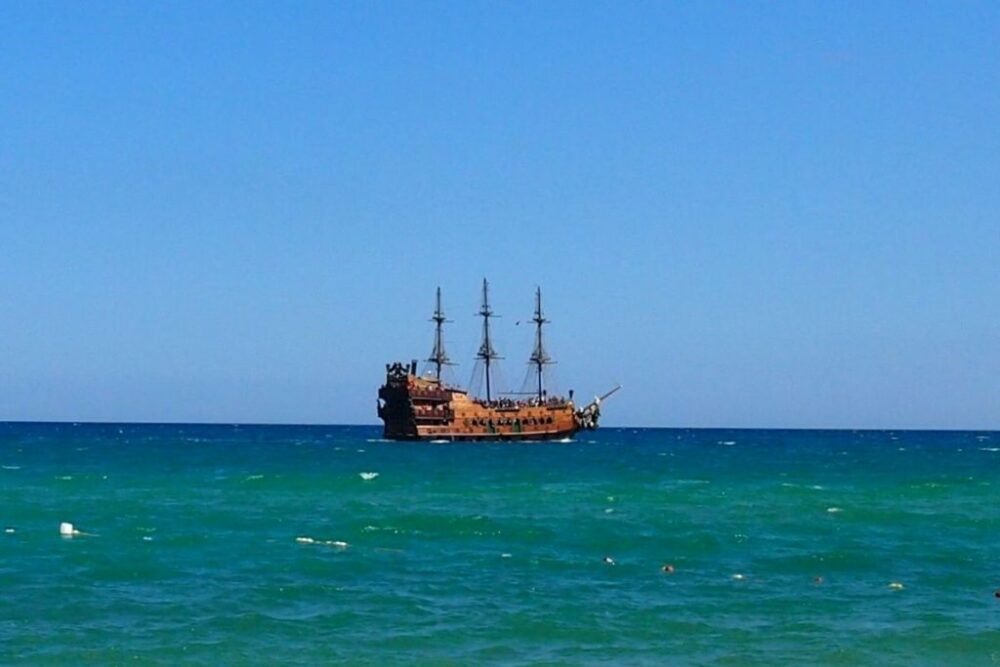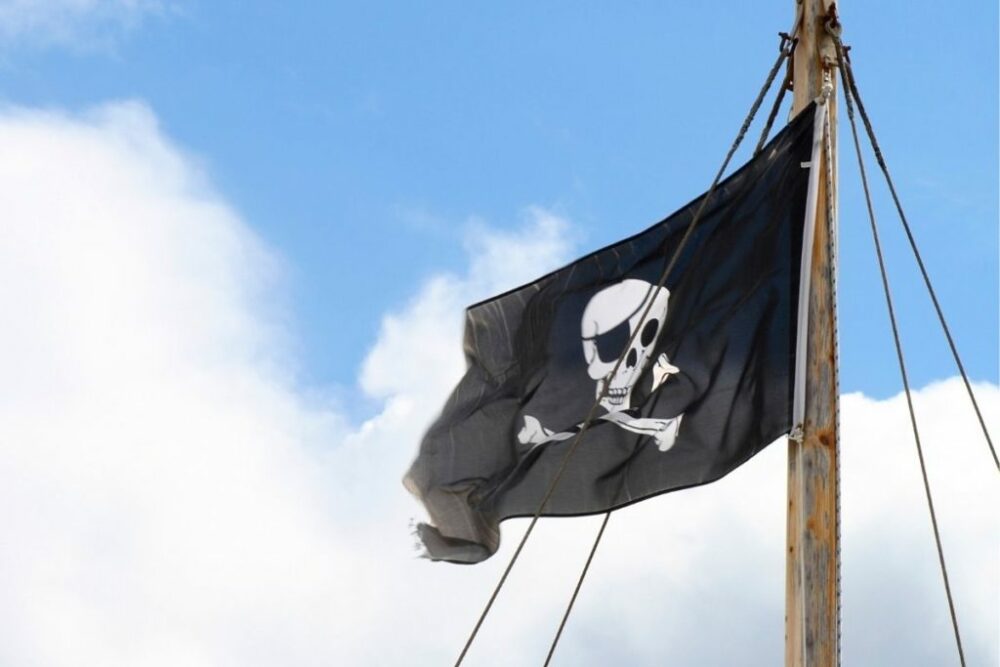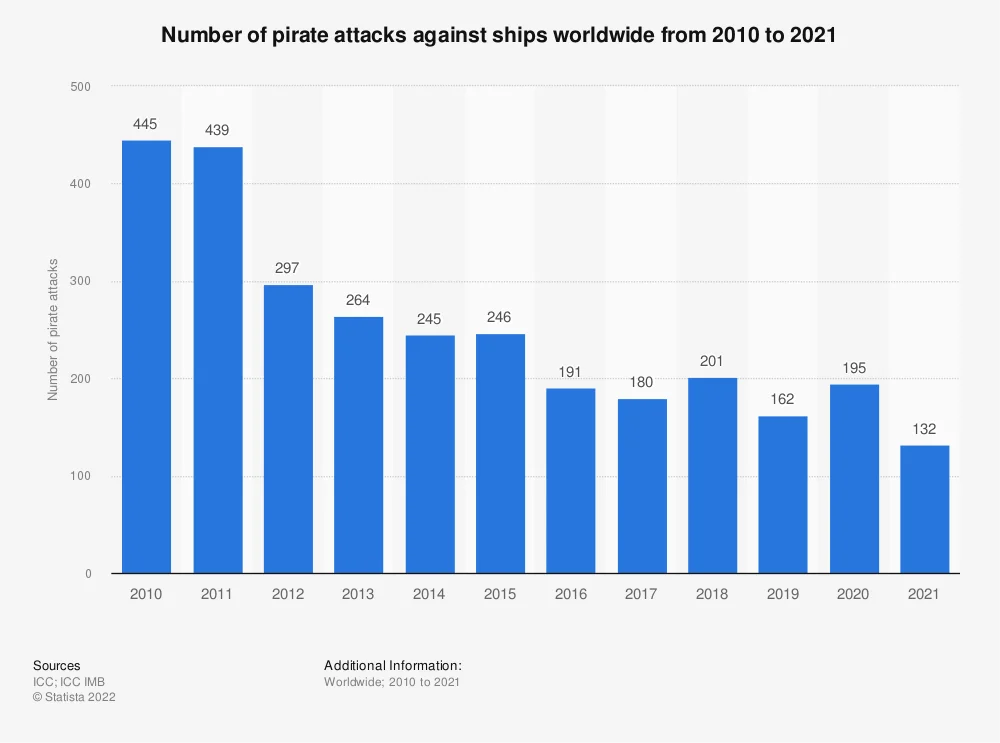Piracy at sea is not just a problem that has been left to history. Many aspects of modern life still have to deal with the threat of pirates in the maritime.
In a world where global trade and commerce still operate mainly by the ocean, seas, gulfs, and waterways, criminals and thieves out on the open water are just as much a danger to cargo vessels now as they were in the 17th century.
There are plenty of things that must be considered when discussing piracy. Some people are mainly drawn to its history and how pirates used to operate.
Others are more concerned with how pirates operate now, why they choose to do so, what tactics and gear they use, and how can they be defended against. It’s a topic that is as fascinating as it is frightening.
That is what this guide has been compiled for: To give you a basic idea of the evolution of modern piracy.
With that out of the way, let’s dive in.

A Brief History Of Piracy at Sea
Piracy as an issue for people and nations has existed for as long as people have been using water to transport items.
The profession of piracy dates back to the Bronze Age, when the exploits of a group of ambiguous origin known as the ‘Sea People’ struck fear into the hearts of the people of southeast Europe and the Middle East.
In the classical period, pirates would be a constant thorn in the side of the Roman Empire. Julius Ceasar, the last Dictator of the Roman Republic, was kidnapped by a group of pirates in the Aegean Sea in the first century BC, whilst small bands of pirates from Germanic people would persist right up until the fall of the Roman Empire and beyond.
Before the Golden Age of Piracy, probably some of the most well-known pirates of history were the Vikings, raiding and pillaging all across Europe and beyond, from the English Channel to Ireland, to Spain, to Ukraine, to North Africa, to even Iceland and North America.
They were the fear of many burgeoning nations of the day.
Of course, piracy was not just a profession that has annoyed the Europeans for 2-thousand years. There were also Moorish pirates sailing the Mediterranean and North Africa.
Austronesian cultures, known since ancient times for their seafaring and navigational skills, have always dealt with pirates of their own throughout history.
China and Korea, from the 13th century to the 16th century, had to deal with repeated raids along its coast from Wokou, pirates, and raiders from Japan.
The most famous examples of piracy in history, however, are probably those that operated during the Golden Age of piracy, in and around the Caribbean.
This is where many of our most famous pirate names come from: Blackbeard, Henry Morgan, Jean Lafitte, Anne Bonny, all come from this period between the 16th and 18th centuries.
Modern Piracy’s Evolution
Unfortunately, modern piracy has none of the romantic fantasy that we have crafted for its golden age counterparts, and, rather annoyingly for us, all the technological advantages of the modern-day.
This makes them a significant danger in the areas that they do operate in, as well as making them a nightmare for governments and organizations to deal with.
As systems of government changed from monarchies and empires to nations, republics, and many other forms we see in the 21st century, we also see a change in how countries have been able to police their borders, with advanced technologies letting coast guards move further and faster than they used to in the Golden age.
On the other side of the law, piracy has also changed as the world around it has. In the past, waves of piracy across the globe usually came with a changing of the tides for groups of people.
For the Vikings, it was the expansion of medieval kingdoms and their accumulation of land and wealth that made raiding them seem like a viable option.
For the pirates that operated in the Caribbean, it was due to thousands of sailors from the major naval powers suddenly finding themselves without a job and pay, so turned their skills back onto their former employers by plundering their trade vessels.
For modern pirates at sea, a similar trend can be found. Like many areas of the world that have found themselves facing issues that cannot be easily dealt with, such as civil wars, climate change, poverty and famines, and water shortages, many have turned to criminal lives to survive or to make a profit.
If there is major political unrest in a country, and the government has no effective way to respond, people are going to turn to crime as their answer. And if that country has any body of water, then piracy is likely to crop up.
Since the start of the Somali civil war in the 1980s, for example, pirates from Somalia have been a major issue in the seas around the East African coast and the Arabian Peninsula.

Piracy at Sea In The 2020s
There have been plenty of attempts to help curb piracy during the 2010s, but the growing list of issues that faced us in the 2020s means that piracy has been on the rise in the last few years. In 2020, the reported amount of piracy by 24% from 2019 alone.
As governments with less wealth lack the ability to better deal with piracy problems, modern pirates are likely to continue to exploit that inability, and with serious consequences.

And the damage modern pirates are capable of is not just the danger they pose to people’s lives. There are serious economic effects pirates can have in the areas where they operate.
In the five years from 2008 to 2013, the shipping industry operating in the Gulf of Aden reportedly lost anywhere between $900 million, to up to 3.3 billion dollars!
And this is without even considering the technologies that Modern pirates have access to, more than previous generations ever had. Pirates will carry a whole range of weaponry to hold ships and boats in ransom, from high-powered and semi-automatic pistols to AK-47s, to RPG launchers.
And this doesn’t even begin to cover some of the other tools that pirates now have at their disposal. High-power computer systems, phones, laptops, radars, sonar, and other pieces of maritime equipment.
In this sense, they have not only become a threat to the people that pilot ships, but they are now a threat to a ship’s systems as well.
And if that wasn’t enough, the strategies that many pirates have started to use have become incredibly difficult to stop or develop counters too.
With such powerful technology at their disposal, some pirates have been known to affect their targets, gaining vital and confidential information.
Not only that, but because many cargo vessels and ships have smaller crews than they used to, pirates have taken advantage of this downsizing by using smaller, faster boats to follow and capture many of these larger vessels with valuable cargo.
Small motorboats are usually enough to catch up to these larger vessels, and have become the primary transport that modern pirates use, especially in narrow bodies of water like rivers and gulfs, where they are much more maneuverable.
Anti-Piracy Measures
Trying to curb piracy has to be one of the biggest challenges of modern security forces around the world. After all, they operate over vast territories and can do so at speeds that can be difficult to counter for many organizations.
These are just some of the strategies that have been used to try and combat piracy in the modern day:
- Laws and legislation. This is the primary way many countries have tried to cut the rates of piracy down, especially by defining privacy as specific acts that can be penalized and arrested for, such as boarding another vessel without permission, taking hostages on a vessel, cargo theft, deliberate shipwrecking of other ships, and sabotaging a ship. Whilst they have been somewhat helpful, two factors somewhat limit the use of legislation as a good countermeasure:
- Legislation usually only works if a government can enforce it on those who break the law. As we’ve already mentioned, governments with less power, such as those facing other crises, simply don’t have the resources to arrest those that break the law, so pirates simply continue to do as they did before.
- Many hotbeds of piracy at sea come from areas where the rate of illiteracy is high. This is a major hindrance to how effective laws can be. After all, how does a person read and follow the law if they can’t read those laws themselves?
- Enhanced cyber-security protocols. Given that the modern digital world is a dangerous place for data storage, even without the threat of pirates, many shipping companies now have software programs that can help monitor a ship’s systems, as well as having more than one procedure to access sensitive information, making it more complex and difficult for the data to be broken into.
- Satellite navigation. GPS can be a useful short-term warning, as imagery of pirate ships in an area can be relayed to a nearby shipping vessel, hopefully giving them a chance to change cause or prepare.
- Self-defense training. Whether this is how to combat pirates should they try ad board their ship, or simply basic drills for the crew members to practice if pirates are nearby, many companies have to prepare their workers if something goes horribly wrong. When all else fails, it may be down to the worker aboard to defend themselves and their ship.
Conclusion
As you can see, the evolution of modern sea piracy is filled with dangerous factors that anyone operating away from shorelines should be aware of. We hope you have found this guide helpful, or at the very least, educational.
- Sustainable and Luxurious: Discovering Split’s Yachting Paradise – April 26, 2024
- MarineTraffic vs VesselFinder: Which Is Better Vessel Tracking Service? – February 14, 2024
- Port Costs: A Comprehensive Guide to Port Dues and Fees for Cargo Ships – February 12, 2024





Leave a Reply